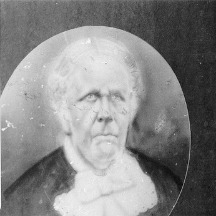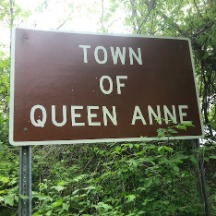When William Lane Watkins walked through the door to introduce himself to Wilson and Jane Ellen Owens Turner in 1877, they already had good feelings about the young man. Jim Parker, trustee of the new, nearby Mount Nebo (Colored) Elementary School in Queen Anne Town, Maryland, had talked to them about why he was so impressed with the fellow: educated, ambitious, and upstanding.
Watkins had recently arrived in Queen Anne Town from New Bedford, Massachusetts and was looking for a place to stay. Mr. Turner was one of three trustees to organize and build the Mount Nebo African Methodist Episcopal (AME) Church.
What Parker or the Turners could not have known immediately upon meeting Watkins was that after graduating from Boston University Medical School the year before, Dr. Watkins resorted to pasting broadsides to fence posts and barn sidings to make a living. Doors slammed when “they found out that he wasn’t White,” his son, Harry Brooke Watkins, recounted decades later during an interview with Donald Shomette and Fred Tutman in March, 1998.
Sometime between 1876-1877, Watkins migrated from New Bedford to Baltimore, Maryland where he was soon employed in the U.S. Customs Office and where Mount Nebo (Colored) Elementary School trustee Parker was also employed. Soon, Parker offered Watkins a teaching job. Parker was thrilled when he accepted since convincing educators to come to Queen Anne Town had been difficult because housing was very limited and teacher salaries were lower than those offered in urban settings. Mount Nebo students’ school year, as well as teacher salaries, were determined by the agricultural calendar.
Rent for a room in the Turner’s home was $10 a month, a goodly sum in those days, not leaving the doctor and teacher much for other living expenses. Watkins easily settled in with the close-knit family of twelve as a boarder and later joined the Turner family with his marriage to their daughter, Jane, named after her mother, in September, 1878.
Rural Queen Anne Town was all-together different from the New Bedford Watkins knew in his youth. The city had been the whaling capital of the world in the mid-18th century, and home to Lewis Temple, a free Black man, who created a specially designed toggle for harpoons. Frederick Douglass and other fugitive slaves found haven there and fueled the abolitionist movement with their narratives.
In Orville’s “Moby Dick,” Ismael described New Bedford as “perhaps the dearest place to live in all New England.” On March 27, 1868, Charles Dickens stopped in New Bedford as part of his “Reading Tour of America,” delighting his audience with selections from “A Christmas Carole,” and his classic, “The Pickwick Papers.”
Dr. Watkins, The Colored Who Defied Housing Segregation Circa 1880
Tales from Historic Mount Nebo Series: See Note at the end of this article about this series and additional stories
Tales from Historic Mount Nebo Series: See Note at the end of this article about this series and additional stories
Praising the Past




Then there was President Ulysses S. Grant’s visit to the city on August 1, 1874, with all of its pomp and circumstance. An array of businesses, organizations, and institutions sprang forth in New Bedford during the mid-1800s, including the Young Men’s Christian Association in America and the U.S. Coast Guard Academy.
Undoubtedly, Watkins was the beneficiary of New Bedford’s rich history and culture, intellectual prowess, economic vibrancy, and innovative spirit. So, it should not have been surprising that he decided that he and his wife would move from the countryside to within Queen Anne Town’s city limits, then an all-white community.
Moving into town defied commonly-held beliefs about where he could live. Whites warned him and guardians of Reconstruction-era thought “reminded him that ‘no N’ was allowed to live on Queen Anne Bridge Road.” Watkins asserted that “he was not a 'N’ and that he would live there if he chose to,” according to his son, Harry Brooke Watkins, during an interview with Donald Shomette and Fred Tutman in March, 1998.
His descendants still live in the area. Some having fought and still fighting some of the same battles.
Tales from Historic Mount Nebo Series is an ongoing series of stories about people connected to the historic Mount Nebo African American Episcopal Church, Cemetery, and/or Colored School in Bowie, Maryland. Click the link below for the original story and for links to this and other stories in the series.
Black Lives Matter in Death, Too – Mt. Nebo AME Preserves Historic Cemetery

Undoubtedly, Watkins was the beneficiary of New Bedford’s rich history and culture, intellectual prowess, economic vibrancy, and innovative spirit. So, it should not have been surprising that he decided that he and his wife would move from the countryside to within Queen Anne Town’s city limits, then an all-white community.
Moving into town defied commonly-held beliefs about where he could live. Whites warned him and guardians of Reconstruction-era thought “reminded him that ‘no N’ was allowed to live on Queen Anne Bridge Road.” Watkins asserted that “he was not a 'N’ and that he would live there if he chose to,” according to his son, Harry Brooke Watkins, during an interview with Donald Shomette and Fred Tutman in March, 1998.
His descendants still live in the area. Some having fought and still fighting some of the same battles.
Tales from Historic Mount Nebo Series is an ongoing series of stories about people connected to the historic Mount Nebo African American Episcopal Church, Cemetery, and/or Colored School in Bowie, Maryland. Click the link below for the original story and for links to this and other stories in the series.
Black Lives Matter in Death, Too – Mt. Nebo AME Preserves Historic Cemetery
Advertisers | Contact Us | Events | Links | Media Kit | Our Company | Payments Pier
Press Room | Print Cover Stories Archives | Electronic Issues and Talk Radio Archives | Writer's Guidelines






